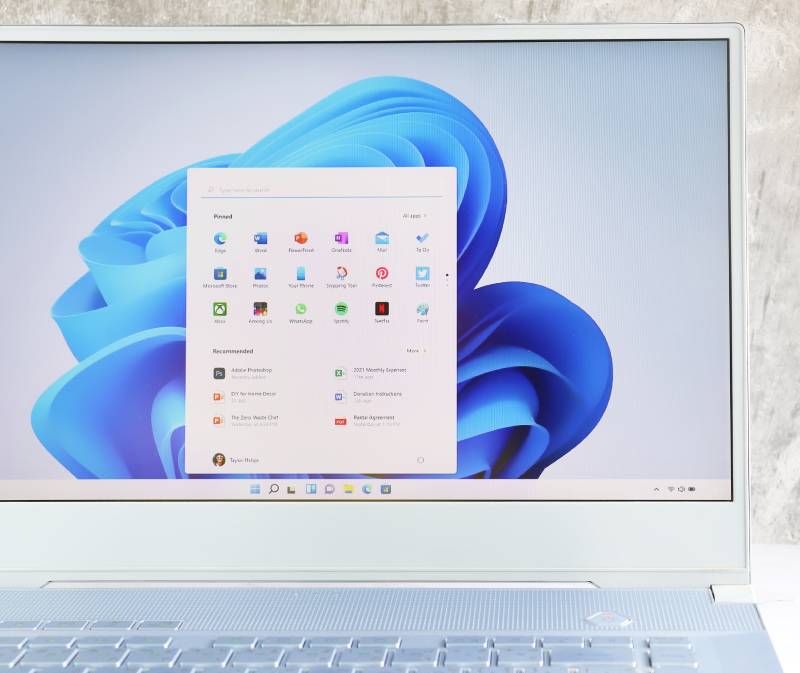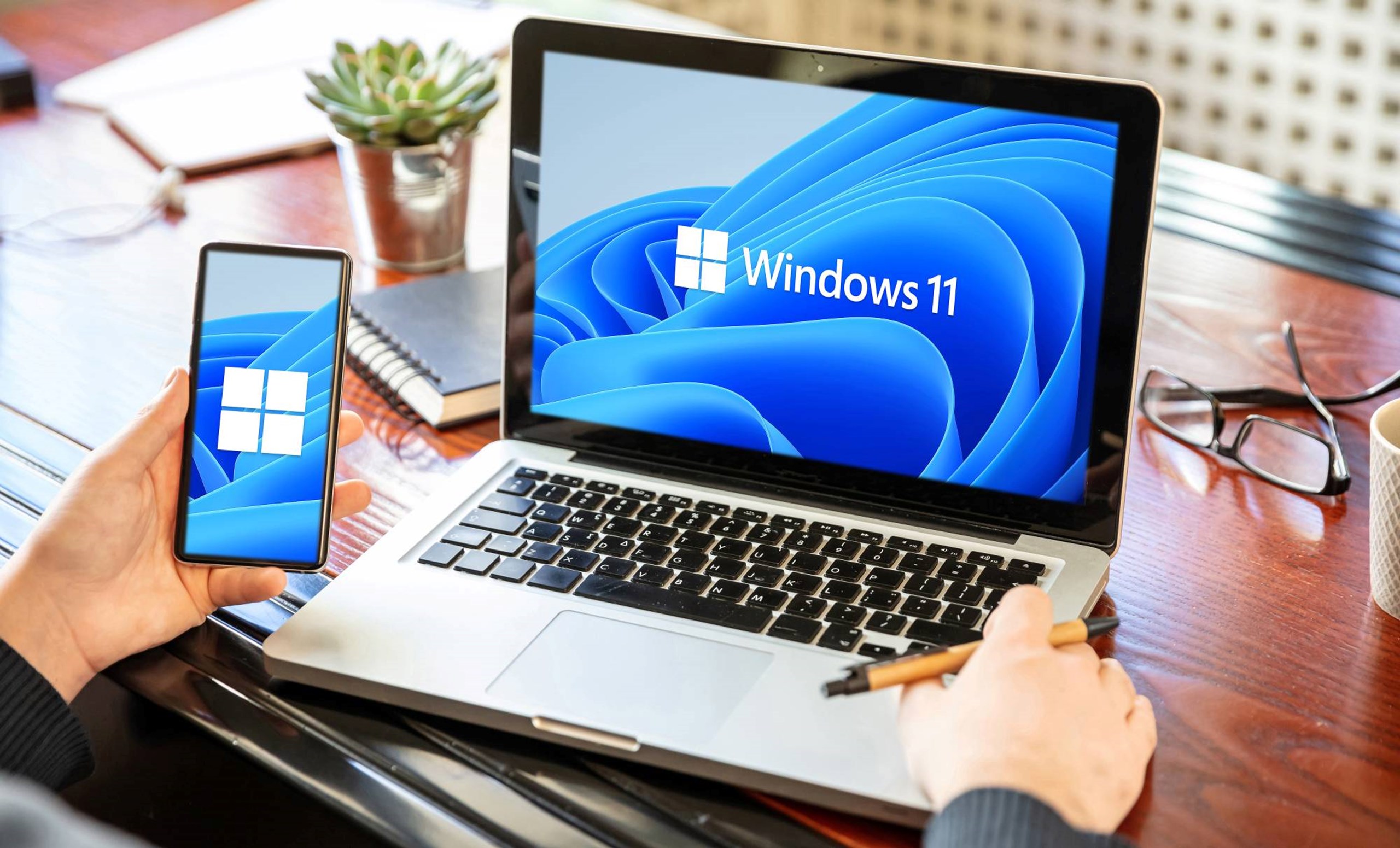It might feel like you’ve only just got to grips with windows 10 but actually it’s been more than six years since it’s launch, In fact it’s the longest wait between operating systems versions in Microsoft’s history.
No need to panic , Microsoft have confirmed they will be supporting windows 10 until 2025 but has it been worth the wait for Windows 11? When should you upgrade and how can you go about it ?
In this business focused review of Microsoft’s latest operating system Windows 11, we address some of the questions you may have been wondering since it’s release in October 2021.
Hardware requirements
Probably the most important question to consider when upgrading to Windows 11 is whether your PC can handle it.
If you’re currently using windows 10 then you can upgrade for free as long as your pc or laptop complies with the following minimum system requirements:
- Processor: 1GHz or faster with two or more cores on a compatible 64-bit processor or system on a chip (SoC)
- RAM: at least 4GB
- Storage: at least 64GB of available storage
- Security: TPM version 2.0, UEFI firmware, Secure Boot capable
- Graphics card: Compatible with DirectX 12 or later, with a WDDM 2.0 driver
- Display: High definition (720p) display, 9" or greater monitor, 8-bits per colour channel
Virtually all PCs designed and built since 2015 include TPM 2.0 support, although you might have to go into the firmware settings to enable it. If you bought your pc within the last 3 years then it’s likely that you will be able to run windows 11 , but it’s not guaranteed. You can check whether your machine is up to it by downloading and running the Microsoft PC Health Check App
How do I download Windows 11?
Microsoft intends to offer Windows 11 as an update to PCs running Windows 10 based on its estimation of whether those devices will have a satisfactory upgrade experience. If you'd like to skip the wait and install Windows 11 early, you can visit the Download Windows 11 page, where you can choose one of three installation options:
- Run the Windows 11 Installation Assistant, a utility program that downloads the necessary installer files and upgrades the current PC.
- Create Windows 10 installation media on a USB flash drive or, for traditionalists, a DVD.
- Download a Windows 11 disk image in ISO format.
Whats new with Windows 11? Here’s what we like …
Start Button
The most noticeable change with Microsoft’s latest operating system is the appearance of the start menu and the taskbar. The iconic start button that emerged in Windows 95 has now been moved along with the taskbar icons to the middle of the screen , instead of over to the left. You also don’t scroll through it as you do the windows 10 start menu. It’s much quicker to access relevant widgets and applications as well as finding your most recent documents. This fully utilises the cloud and Microsoft 365, meaning all your recent files will display, no matter what device you were viewing them on before.
Snap Layout and Groups
Microsoft have made it even easier to multitask and open multiple windows at once in your chosen layout , adapting to your screen size and enabling you to view multiple documents, browsers and platforms at once for more efficient working. The prebuilt screen layout is designed to enable you to find the perfect layout that works for you. It’s a little bit confusing at first but we like the idea!
Snap Groups remembers collections of apps you’ve used in a Snap Layout and displays them in the Taskbar. This allows you to minimise and get access to the Group at once, without having to control each window individually.
Desktops
You can create and customise different Desktops, helping you instantly recognise between different activities and stay focused. E.g., you can create different Desktops for school, work, gaming, social etc.
Microsoft Teams
Since the Covid-19 pandemic changed the way that we work and live Microsoft is assuming that chat and video meetings will remain an important part of peoples work. Microsoft Teams is built into Windows 11 devices, meaning you can instantly connect with colleagues directly from your Taskbar. It also integrates seamlessly with Outlook and Calendar, making communication even more streamlined.
Search
Search has had a little tweak but is not too different than before. When you click on its icon like the new start button it pops up in the centre of the screen just above the taskbar and is more pleasing to the eye. Because it uses smaller icons than the Windows 10 search it’s able to fit more into less space, offering four ‘quick search’ icons compared to Windows 10’s three.
Updates
Updates are 40% smaller and happen in the background, so you’re not disrupted throughout the day
Improved Health Check
An improved health check app makes recommendations to suit you, including brightness settings, power saving modes, and more.
Performance
Microsoft claims that windows 11 works hard in memory management to favour the application window you have open running in the foreground, this way that application gets more CPU power over the other system resources for example, even under 90% CPU load the Excel App in Windows 11 opens up with speed, despite the CPU being so busy. The same applies to the shell in Windows 11 which powers the start menu and other visual effects.
Other notable performance changes in Windows 11 touch on the way your PC resumes from sleep and handles standby time versus Windows 10. It should help your PC wake up to 25% faster from sleep mode.
Microsoft talks about the performance benefits and optimizations in windows 11 in this video https://techcommunity.microsoft.com/t5/microsoft-mechanics-blog/windows-11-the-optimization-and-performance-improvements/ba-p/2733299

What’s missing from windows 11 that was in Windows 10?
The absence of Cortona (turned off by default in windows 11) suggests that Microsoft no longer sees it as competition for Siri, Alexa and Google assistant. Its still there if you want to turn it on but the demotion is a sign of its eventual demise.
The Action Centre is gone, replaced by separate Notifications and Quick Settings panels. Quick Settings is more compact and shows more settings at once than its Windows 10 predecessor.
Why I should get it?
On the other occasions that Microsoft took so long to update to new versions of windows the changes were momentous. This time it doesn’t seem to be the case. The new start menu is useful and welcome but its not revolutionary and that seems to be the most noticeable interface change.
Microsoft’s main priority with the upgrade to windows 11 is all about security. It requires a device that’s capable of Secure Boot, which prevents malware from attacking the boot process. Your PC must also have a TPM chip to manage cryptographic keys and protect your PC’s operating system and firmware. If enabled, It’s the secured boot and reliance on TPM 2.0 that vastly enhance security in Windows 11.
According to Microsoft “secured-core PCs are twice as resistant to malware infection,”
Microsoft has recognised that with the new ‘Hybrid’ working environments are here to stay and that has inspired the Windows 11 features and advancements that enable the remote worker to work more efficiently, securely and collaboratively.
If you feel like giving windows 11 a try you have 10 days to revert back to Windows 10 if you don't get on with it. It isn't impossible after that to downgrade but it'll be a bigger hassle so make sure you've considered when your 10 days are up.

Are there any concerns about upgrading to Windows 11?
With windows 11 being such a new operating system it's bound to have some bugs and issues that may or may not impact the performance of your system and you potentially should consider refraining from upgrading immediately. This is to give Microsoft the chance to iron out any potential issues that may arise in the first few months of launching.
If you are a business owner your main concern is likely to be the minimum system requirements required to upgrade.
We recommend that businesses should be upgrading their physical workstations every 3 years. For businesses that have not been able to upgrade their equipment within the last 4 years the upgrade to windows 11 would require upgrading their hardware which would require a significant investment.
If your hardware doesn’t support Windows 11, there’s no need to rush out and replace all PC’s immediately unless you want to get the added hardware-based security or if you’re feeling bored with the way Windows 10 looks and would like something easier on the eyes. Microsoft has promised to support Windows 10 until October 2025, so your current Windows 10 PC’s will continue to receive bug fixes and security updates for a good while longer leaving plenty of time to upgrade.
If you would like to find out more on Windows 11, get in touch today.
